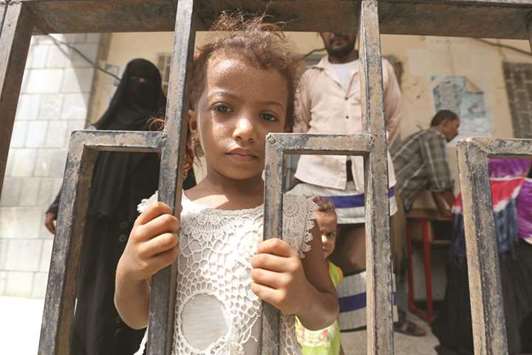The battle for the port of Hodeidah could become a turning point in Yemen’s civil war. The following is a timeline of the impoverished Arabian Peninsula country’s slide into violence and how the conflict has developed.
1990 Unification of north and south Yemen to form a single state under president Ali Abdullah Saleh.
1994 Civil war in which Saleh prevents south, angered by what it sees as lower status, from splitting with north.
2003-09 Houthi group in north protests marginalisation of the local Zaydi Shia Muslim sect and fights six wars with Saleh’s forces and one with Saudi Arabia.
2011 Arab Spring protests undermine Saleh’s rule, lead to splits in the army and allow Al Qaeda in the Arabian Peninsula (AQAP) to seize swathes of territory in the east.
2012 Saleh steps down in a political transition plan backed by Gulf states. Abd-Rabbu Mansour Hadi becomes interim president and oversees a “national dialogue” to draft a more inclusive, federal constitution.
2013 AQAP survives military onslaught and drone strikes, staging attacks across the country while retaining a persistent presence. Saleh and his allies undermine the political transition.
2014 The Houthis rapidly advance south from Saadeh and seize Sanaa on September 21 with help from Saleh. They demand a share in power.
2015 Hadi tries to announce a new federal constitution opposed by the Houthis and Saleh, who arrest him. He escapes, pursued by the Houthis, triggering Saudi intervention in March along with a hastily assembled Arab military coalition.
Months later, the coalition drives the Houthis and Saleh loyalists from Aden in south Yemen and Marib, northeast of Sanaa, but the front lines solidify, setting up years of stalemate.
2016 AQAP takes advantage of the chaos to establish a mini-state around Mukalla in east Yemen, raising fears the war will lead to a new surge in militant activity. The UAE backs local forces in a battle to end the group’s rule there.
Hunger grows as the coalition imposes a partial blockade on Yemen, accusing Iran of smuggling missiles to the Houthis through Hodeidah alongside food imports, something it denies. Coalition air strikes that kill civilians prompt warnings from rights groups, but Western support for the military campaign continues.
2017 The Houthis launch a growing number of missiles deep into Saudi Arabia, including at Riyadh. Seeing a chance to regain power for his family by reneging on his Houthi allies, Saleh switches sides, but is killed trying to escape them. Friction also develops between fighters in Aden backed by Saudi Arabia, and those backed by its Emirati coalition partners.
2018 Coalition-backed forces, including some flying the southern separatist flag, advance up the Red Sea coast against the Houthis, aiming to take the port of Hodeidah, the last main entry point for supplies into north Yemen.

A girl stands behind a fence at a school to which she and her family have been evacuated from a village near Hodeidah airport.

